Space Image of the Day Gallery (July 2017)
Image of the Day Archives
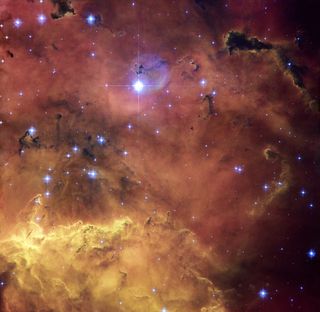
For older Image of the Day pictures, please visit the Image of the Day archives. Pictured: NGC 2467.
Hubble Spots a Seyfert Galaxy
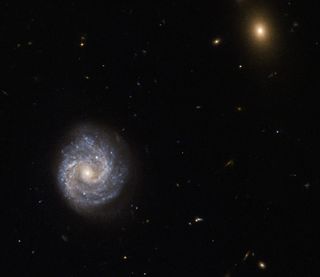
Monday, July 3, 2017: The Hubble Space Telescope peered deep into space to image this bright galaxy with a name that's quite a mouthful: 2XMM J143448.3+033749. Classified as a Seyfert galaxy, this radiant system of stars is thought to contain a supermassive black hole at its center. It lies nearly 400 million light-years away from Earth. — Hanneke Weitering
Messier 77
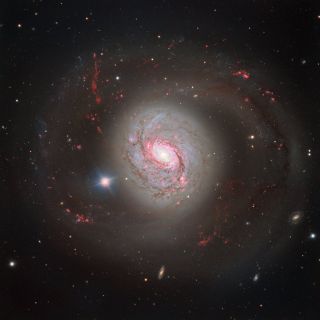
Wednesday, July 5, 2017: The active galactic nucleus at the core of the spiral galaxy Messier 77 (also known as NGC 1068) glows brightly in this image from the European Southern Observatory's Very Large Telescope in northern Chile. This luminosity comes from a supermassive black hole that is spewing high-energy radiation into its surroundings. — Hanneke Weitering
Reflection of the Milky Way
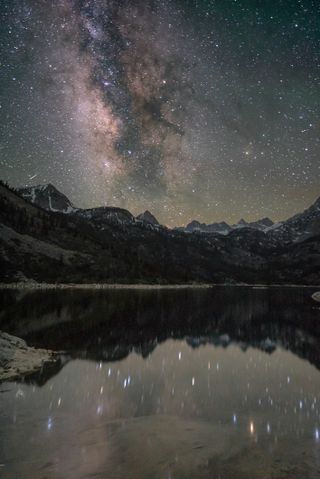
Thursday, July 6, 2017:Stars of the Milky Way reflect off of California's Lake Sabrina in this image by astrophotographer Chirag Upreti. To the left, a meteor streaks over a snow-capped mountain peak of the Eastern Sierra. — Hanneke Weitering
Sunset Launch

Friday, July 7, 2017:A SpaceX Falcon 9 rocket blasted off from NASA's Kennedy Space Center in Florida just before sunset on Tuesday (July 5). It successfully deployed the Intelsat 35e communication satellite into geostationary transfer orbit after a 30-minute flight to space. — Hanneke Weitering
Chilean Night Sky
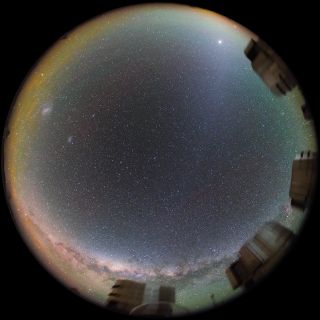
Monday, July 10, 2017: This fish-eye view of the night sky was taken at the Paranal Observatory in Chile's Atacama Desert. The Milky Way is sprawled out over the European Southern Observatory's Very Large Telescope array, while the Large Magellanic Cloud and Small Magellanic Cloud are visible in the top left. — Hanneke Weitering
Active Region 12665
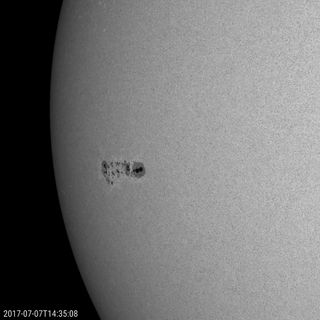
Tuesday, July 11, 2017: After the sun was spotless for two days last week, this lone, speckled group of sunspots rotated into view on Wednesday, July 5. NASA's Solar Dynamics Observatory has been tracking the sunspot and watching it grow ever since. Now known as Active Region 12665, this blob of sunspots could produce solar flares in the near future, though it's too early to predict, NASA scientists said. — Hanneke Weitering
Get the Space.com Newsletter
Breaking space news, the latest updates on rocket launches, skywatching events and more!
'Hanging Out' With JWST

Wednesday, July 12, 2017: NASA's James Webb Space Telescope hangs in a special spacecraft hammock inside a testing chamber at Johnson Space Center in Houston. Being suspended inside this chamber will protect it from the vibration of the chamber walls when cryogenic testing begins, turning the room into a giant spacecraft refrigerator. — Hanneke Weitering
Jupiter's Red Spot Up Close
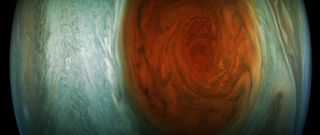
Thursday, July 13, 2017: NASA's Juno spacecraft flew by Jupiter's Great Red Spot on Monday (July 10) and captured this incredible view of the iconic storm. At the time, Juno was about 6,130 miles (9,866 kilometers) above the planet's cloud tops. Citizen scientist Gerald Eichstädt created this enhanced-color image using data from the spacecraft's onboard JunoCam. — Hanneke Weitering
Orion Egress Test

Friday, July 14, 2017: NASA's Orion space capsule, which will one day carry astronauts beyond the moon and into deep space, floats in the Gulf of Mexico as crewmembers simulate an emergency escape procedure on July 13. If anything were to go wrong with the capsule during its reentry and splashdown, the astronauts will have to exit through the top hatch, jump in the water and deploy an inflatable raft. — Hanneke Weitering
A Colorful Cosmic Cloud
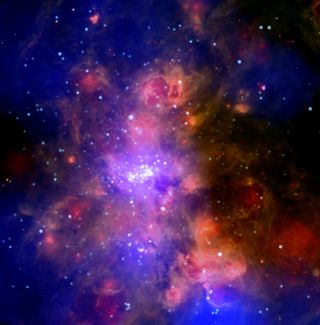
Monday, July 17, 2017: Meet W51, a giant molecular cloud filled with cosmic gas and dust located about 17,000 light-years from Earth. This new composite image of the star-forming region combines X-ray data from NASA's Chandra X-ray Observatory (in blue) and infrared light seen by the Spitzer Space Telescope (orange and yellow-green). — Hanneke Weitering
Join our Space Forums to keep talking space on the latest missions, night sky and more! And if you have a news tip, correction or comment, let us know at: community@space.com.

Space.com is the premier source of space exploration, innovation and astronomy news, chronicling (and celebrating) humanity's ongoing expansion across the final frontier. Originally founded in 1999, Space.com is, and always has been, the passion of writers and editors who are space fans and also trained journalists. Our current news team consists of Editor-in-Chief Tariq Malik; Editor Hanneke Weitering, Senior Space Writer Mike Wall; Senior Writer Meghan Bartels; Senior Writer Chelsea Gohd, Senior Writer Tereza Pultarova and Staff Writer Alexander Cox, focusing on e-commerce. Senior Producer Steve Spaleta oversees our space videos, with Diana Whitcroft as our Social Media Editor.
